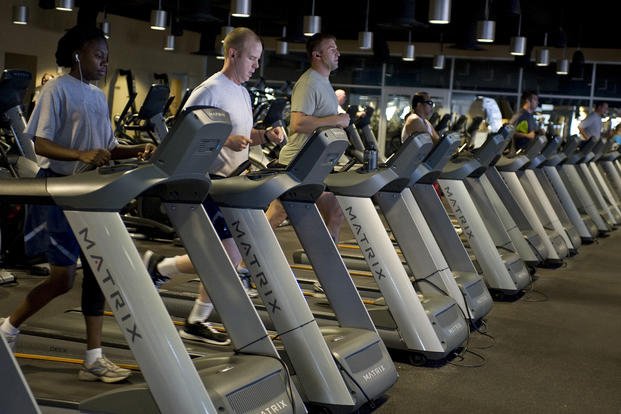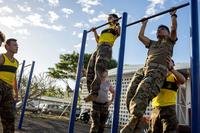The Gerkin Protocol term often is used in running studies, treadmill documentation and other running-related articles. As a runner, it was a personal curiosity to understand better why this test was so important.
That is how I came to discover some useful information that can benefit everyone, but especially those who dream of becoming firefighters.
The Gerkin Protocol tests your cardiopulmonary health (or simpler said, your lungs' health). This is a test demanded by the International Association of Fire Fighters, and you definitely cannot practice the firefighter profession if you don't score excellently on this test.
A few years ago, the IAFF launched a new program called the Wellness-Fitness Initiative. This program demands you pass five fitness tests if you want to become a firefighter or you want to continue practicing this profession: body composition, aerobic capacity, muscular strength, muscular endurance and flexibility.
After this new program was launched, the aerobic test was named WFI treadmill or WFI stair mill. Still, I will refer to the aerobic test in the article as the Gerkin Protocol test, as it's a name more often used.
The Gerkin Protocol test is used to predict the peak of VO2. VO2 is the maximum amount of oxygen (in millimeters) that your body can use in one minute per kilogram of body weight.
Why is this test important for firefighters?
Firefighters must work in environments that contain toxic chemicals, which increase the risks of heart diseases. They wear enormous clothing during assignments and are obliged to breathe through special apparatus while fulfilling extremely demanding physical efforts. That is why cardiopulmonary tests are crucial to a firefighter.
How do you complete the test?
The Gerkin Protocol test is mostly done on treadmills because it's easy to control and to track your speed, incline and heart rate. The formula is quite simple: You determine your VO2 max value when you reach your target heart rate, and you stay in that zone for at least 15 seconds.
There are treadmills that have this preset test in their consoles (but they cost quite a lot). In this article, I would like to present to you how to calculate your VO2 max on your standard treadmill.
Even if this will give you only a predictive VO2 max, it will help with training for this test so you can pass it.
You need a treadmill that can go up to a 15% incline and 10 mph. You also need a wireless chest strap to read your heart rate during the test. This system offers more accurate heart-rate readings than the standard hand-grip sensors. Plus, you have more freedom to move.
This is a treadmill test recommended by the Fire Department Wellness Centre from Calgary.
1. Start with a warmup: 3 mph at 0% incline for three minutes.
2. Continue with running at the same speed but set the incline at 2% for another one minute.
3. Continue running and increase speed by 0.5 mph and incline by 2% every 1 minute.
4. Continue increasing efforts until your heart rate equals or goes over your target heart rate. Run for another 15 seconds.
5. Cool down for three minutes at 3 mph and 0% incline.
To do this test, first you must know your target heart rate (based on your age and sex). You can find the standard values on the internet. Or you can consult your physician before starting to prepare for this test (always recommended).
During workout, you increase the incline/speed until your heart rate exceeds the target heart rate for 15 seconds. When you reach this level, continue running without making any change to the treadmill's settings for another 15 seconds. After the 15 seconds pass, go to the cooldown step.
At the end of the workout, record the total time until the point you exceed the target heart rate, including the three-minute warmup.
Extremely important: If during this exercise, you experience any type of chest pain, other physical symptoms or breathing problems, change to the cooldown mode immediately and stop the test. Consult your physician before anything else. Also, if you do not go over your target heart rate within 18 minutes, stop the exercise.
How do you know when you pass the test?
If you finish the test within the following time/speed/incline settings, you will pass.
-
Stage of the Gerkin Protocol (10): Total time (12:30-13 minutes), speed (6.5 mph), incline (10%)
-
Stage of the Gerkin Protocol (11): Total time (14 minutes), speed (7.0 mph), incline (10%)
-
Stage of the Gerkin Protocol (12): Total time (15 minutes), speed (7.0 mph), incline (12%)
-
Stage of the Gerkin Protocol (13): Total time (16 minutes), speed (7.5 mph), incline (12%)
-
Stage of the Gerkin Protocol (14): Total time (17 minutes), speed (7.5 mph), incline (14%)
Stage 10 is the minimum you need to pass. Stage 14 is the maximum score. If you have lower results, then you will need to focus first on aerobic and cardio workouts to increase your fitness level and your resistance.
What treadmills can support this training?
This will come as good news to all. You don't need to spend thousands of dollars to have a treadmill that can help you train for this test. There are budget treadmills (between $1,000 and $1,500) that support a 15% incline and up to 10 mph (and have the wireless chest strap included). But even better, these treadmills can have the target heart rate tables included in their consoles or include tracking systems so you can keep count of your results in time. Our recommendation is to go with Livestrong treadmills. They never failed us during our tests.
This article is written by Anna Ursu, a runner and treadmill tester for RunReviews.
Want to Learn More About Military Life?
Whether you're thinking of joining the military, looking for fitness and basic training tips, or keeping up with military life and benefits, Military.com has you covered. Subscribe to Military.com to have military news, updates and resources delivered directly to your inbox.

















